Story Of Rooms
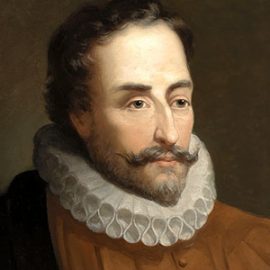
MIGUEL DE CERVANTES
The involvement of Spanish novelist, poet and playwright Miguel de Cervantes Saavedra with Istanbul is during the period of slavery in his life. The author of Don Quixote — a classic of Western literature considered to be first modern European novel — was a navy man who took part in the battle of Lepanto. He was captured by a Turkish commodore named Deli Mehmet in September 1575 right after the Navarino expedition. His life as a slave in Barbary lasted for 5 years. He made many failed attempts to escape. Cervantes was sold and resold several times until he was bought by Hasan Pasha of Algiers. He was then taken to Istanbul as a slave labourer to work in the construction of Kılıç Ali Pasha Mosque that Kılıç Ali Pasha had commissioned to Mimar Sinan. Kılıç Ali Pasha was no other than Uluç Ali Pasha, the single undefeated Turkish admiral in the battle of Lepanto. He had been renamed Kılıç Ali Pasha and promoted to Chief Admiralty of the Navy after the war. After 5 years of slavery, his family managed to get together the ransom required for his release so he could return to the land where he belongs. The adventurous years of Cervantes in Barbary and Istanbul were reflected in his works. He wrote a three act play in verse titled “La Gran Sultana Dona Catalina de Oviedo” early in the 17th Century. He wrote mostly about Istanbul and Topkapı Palace in this book. The events described therein had occurred during the reign of Murat III at the end of the 16th Century.
Room 2
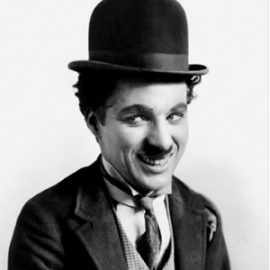
CHARLIE CHAPLIN (16th April 1889 – 25th December 1977)
Charlie Chaplin, English movie director, actor, writer, soundtrack composer, mounter and comedian who was probably the greatest name of the silent cinema is identified with “the Tramp” who is still one of the most imitated movie characters in the whole world. The tramp character with his baggy pants, melon hat and oversized shoes, always twirling his cane and creating slapstick sequences through his clumsy demeanour is a type that one can easily come across in popular areas of many touristic cities. But Chaplin was much more than a slapstick comedian character. He also created such masterpieces as “Gold Rush”, “City Lights”, “Great Dictator” and “Modern Times”. A unique toy created for the Tramp character and presented to Chaplin was acquired by Istanbul Toy Museum on the occasion of the artist’s 100th birthday. Founder of the museum Sunay Akın spoke at a meeting when the toy arrived in Istanbul, and said that the Tramp –who had first appeared on screen in the movie “Kid Auto Races in Venice”— became famous in a short time and rose to first rank among the list of “immortals of cinema history” through the course of years.
Room 3
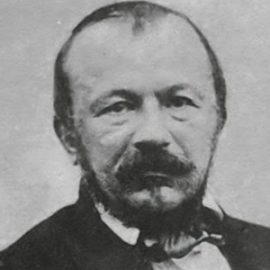
GERARD DE NERVAL (22nd May 1808 – 26th January 1855)
Istanbul’s specific features have been described in depth and detail by many writers. One of these writers is Gerard de Nerval who reflected the transformations during the Period of Reform in the chapter on Turkey of his work “Voyage en Orient” (Voyage to the Orient). Coexistence of Turks, Armenians, Greeks and Jews in Istanbul has always fascinated foreign travellers. This is a topic frequently emphasized in the book of French poet, writer and traveller Nerval who was a powerful representative of Romanticism. He quoted examples of what he observed in the city to show that great religious tolerance existed in Istanbul. Changes during the Period of Reform were reflected in every sphere of life. Topics such as social life in Istanbul, life in Ottoman Palaces, non-muslim minorities who live in Pera and Galata, newspapers printed in Istanbul, societies to prevent cruelty to animals, dressing codes during the Period of Reform and changes in contemporary Turkish art, entertainment and the show business are vividly described in Nerval’s work.
Room 4
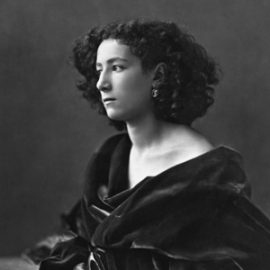
SARAH BERNHARDT (22nd October 1844 – 26th March 1923)
Sarah Bernhardt, who was one of the most celebrated actresses of 19th Century Europe came to Istanbul 4 times to perform on stage. In one of these visits she performed for Sultan Abdulhamid in the theatre at Yıldız Palace. The Sultan awarded a medal to Sarah Bernhardt after the play. Visits of the French actress in Istanbul were in 1888, 1893, 1904 and 1908. Her first arrival was quite grandiose. Newspapers reported that extra chairs were placed in the theatre so that an audience of 700 could attend the play each evening. Her second visit was in 1893. Verdi Theatre where she was to perform was reinforced with a great many columns and steel beams because “the hall might not carry the weight of spectators eager to applaud the actress”. Sarah came also in 1904 to perform. Abdulhamid liked to have shows at the palace. As narrated by Tahsin Pasha, the current clerk-in-chief to the Chamberlain: “Sultan Hamid was fond of the theatre. At times when he had been busy or was mentally tired, he ordered for a theatrical performance. Famous actors and actresses always performed in the Palace Theatre whenever they came to Istanbul. Among these artists were Mounet-Sully, Sarah Bernhardt and Ermete Novelli. These artists were always awarded medals or rewarded with lavish gifts.” Bernhardt’s last visit to Istanbul was in November 1908 right after the declaration of the Second Constitutional Era. After this visit, Sarah Bernhardt would say: “All eyes in Europe are now turned towards Turkey after the revolution of 1908. I am in fact fascinated by Turks. I am in love with the azure seas of the Orient.”
Room 5
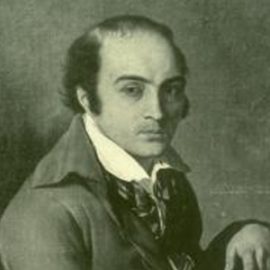
ANDRE CHENIER (30th October 1762 – 25th July 1794)
Andre Chenier is one of the most important poets of French literature. But you should not let that deceive you, for he is also a poet whose birthplace is in Istanbul. He was born on an Autumn day in St. Pierre Building at Karaköy to a French father and a mother of Greek descent. Andre-Marie Chenier spent the first three years of his 32-year lifespan in Istanbul. He inherited his unremitting vibrancy and headstrong attitude from his father Louis de Chenier who was a French diplomat, and the finesse and sensitivity of his eager soul from Santi-Lomaca, his mother of Greek origin. Chenier’s family departed from Istanbul to settle in Paris when he was 3 years old. He was brought up in an enlightened community thanks to his mother’s circle of friends who were all poets or writers. He was quite proficient in Greek by the time he was 6 because of his mother’s Greek origin. In fact, he had translated a poem by Sappho into to French while he was still very young. Chenier’s attraction to the Greek language played an important part in the development of his sense of poetry. He enrolled at St. Cyr Military Academy and graduated in 1781. Chenier was appointed as an officer to Angoumois Infantry Regiment at Strasbourg in 1782. He could put up with it for no longer than six months. He resigned from the army and returned to Paris. Chenier was appointed in December 1787 to the French Embassy in London. His work was easy and the poet had the opportunity to spend considerable time studying English literature on his idle hours. Chenier rushed to Paris when the revolution began. He was jailed by a revolutionary court because he had helped a royalist woman escape when the court decided to arrest her. Despite his father’s efforts and the assistance of his brother who was a bureaucrat, he was sent to the guillotine on charges of counterrevolutionary activity along with tens of other convicts just two days before the fall of Robespierre.
Room 6
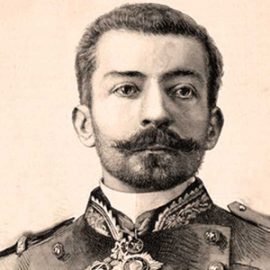
PIERRE LOTI (14th January 1850 – 10th June 1923)
French novelist Pierre Loti is a writer whose name now lives on in many parts of Istanbul. His relationship with Istanbul has however been much disputed. Pierre Loti visited Istanbul several times. The first was in 1876 as an officer on a French ship. Loti was very impressed with the Ottoman style of life, as can be seen in many of his works. This where he met the woman whose name is glorified in the novel “Aziyade” that he wrote in 1879. He used to live in Eyüp Sultan precinct whenever he was in Istanbul. Pierre Loti was an ardent fan of Istanbul, and always identified himself as a Turcophile. Nevertheless, Turkish intellectuals were divided over Loti. Some intellectuals believed that he was a true Turcophile, while others argued that he was in fact friendly out of sympathy for the weak and underdeveloped Ottomans. Foremost among the latter was Nazım Hikmet who wrote a poem in 1925 titled “Pierre Loti the Charlatan” where he totally abased the famous novelist. He defined Loti as a bourgeois “who sold inferior French cloth at five hundred percent mark-ups to the Orient”. Author Abdülhak Şinasi Hisar, on the other hand, gushed over Loti in his book “Istanbul and Pierre Loti” and said that what he wrote bore higher national feeling and taste over what certain Turks had written. Hisar hoped that all of Loti’s works about Turkey would be translated into Turkish.
Room 7
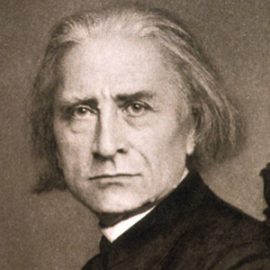
FRANZ LISZT (22nd October 1811 — 31st July 1886)
Great Hungarian born composer Franz Liszt left a mark on the city and embellished his life with the memories of his voyage though he stayed for only five weeks in Nuri Ziya Street on the left side of the road from Galatasaray to Tünel in Pera. A small plate on the sidewall of the building of the Lodge of Free and Accepted Masons on the left side of the street tells us that Franz Liszt stayed there in 1847. The newspaper Takvim-i Vakayi had proclaimed the arrival of the artist in issue dated 2nd December 1846 as follows: “According to some reports, Monsieur Liszt who is a most famous piano virtuoso will be coming to Istanbul.” Right after the paper came out, however, German pianist Eduard Lisztman arrived in Istanbul. He performed concerts at the Palace in the presence of the Sultan and received various gifts from him, leaving the city three weeks before he real Liszt arrived. According to a letter to his cousin 37 years later in 1884, Liszt was arrested as an imposter as soon as he set foot in Istanbul. Several other sources however prove that no such thing had ever happened. It seems that Liszt had lied to create his own myth and boost his artistic ego. Liszt performed piano recitals for Sultan Abdulmejid at the former Çırağan Palace in Istanbul. He used a glass piano and sat on a glass seat during these recitals. Both the piano and the seat are now on display at the Glassed Pavilion of the Palace. A second piano was made for these recitals by Sebastian Erhard, to be later sold to the famous Greek Mikhail Baltazi for 16 thousand coins of gold. He also composed partitions to added to Mejidie Anthem formerly composed by Donizetti Pasha, Master of the Imperial Band. He was awarded a Fourth Degree Mejidie Medal and a diamond studded box worth 12.500 gold coins.
Room 8
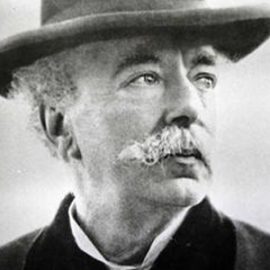
EDMONDO DE AMICIS (21st October 1846 – 11th March 1908)
Italian novelist, storyteller and poet Edmondo de Amicis who is known for his children’s book “Cuore” (Heart) came to Istanbul in 1874 to stay for a considerably long time. He described Istanbul sometimes in a superficial and single dimensional manner just like any traveller from Europe would, and sometimes as a meticulous journalist who is a stickler for detail. He was keenly aware of the beauty that the city would forfeit in the future, and expressed his heartfelt concern both as a social scientist and as a denizen of Istanbul. His travel book provides a narrative of Istanbul in powerful observations where he tries to understand and decipher the soul of the city in all its layers. Amici’s book “Istanbul” has been a source of inspiration for many writers and artists ever since it was published. He was interested more in the people of Istanbul and their habits rather than in how beautiful or strange the city was. Amicis beheld each and every feature of the city from ferry stations to birds, from mosques to side streets, and from fountains to squares in fervent interest and awe.
Room 9
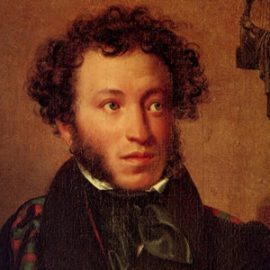
ALEXANDER SERGEYEVICH PUSHKIN (6th June 1799 – 10th February 1837)
Alexander Sergeyevich Pushkin is a poet who is considered to be a genius in Russian literature was in Caucasia during the Ottoman Russian war in 1829, and travelled from there to Kars and Erzurum. In his work titled “A journey to Arzrum”, he tells of his sympathy and respect for Turks as well as how he had helped wounded Turkish officers. Pushkin is also known to have written a poem of 52 lines about Istanbul after his voyage to Erzurum. In these lines we find the impressions of a janissary who had come from Istanbul to Erzurum, comparisons between the two cities, as well as how Istanbul has turned its face towards the West rather than the East. Pushkin’s love for the Orient and his extraordinary respect and veneration for Turks has not been left unanswered. Most of Pushkin works have been translated into Turkish. Furthermore, it is no coincidence that the only university in the whole world except for Russia with a statute of Pushkin is in Istanbul. This Pushkin statue is at Okan University, facing the Department of Fine Arts.
Room 10
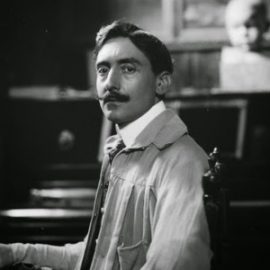
PIETRO CANONICA (1st March 1869 – 8th June 1959)
Italian sculptor, artist and composer Pietro Canonica has left an imprint on the history of Turkish Art through large marble and bronze statutes that he sculpted in Turkey during the early years of the Republic. The famous Monument of the Republic in Taksim, Istanbul is the most celebrated of his works in Turkey. Equestrian Monument of Atatürk (in front of Ankara Ethnography Museum, 29th October 1927), Field Marshall Atatürk Monument (at Zafer Square in Sıhhiye, Ankara, 4th November 1927), Monument of the Republic at Taksim Square (Istanbul, 8th August 1928) and Atatürk Monument at Izmir (27th June 1932) are among the monumental sculptures created by the artist between 1927 and 1932 while he was in Turkey. Other important sculptures by Pietro Canonica include the Equestrian Statue of Tsar Alexander II in St. Petersburg, Monument of Argentinian President Figuera Malacorta in Buenos Aires, Simon Bolivar Monument in Columbia, and the Equestrian Statue of King Faisal I in Baghdad.
Room 11
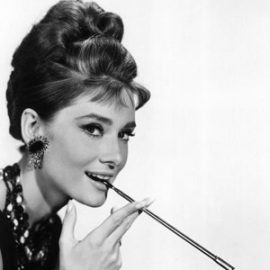
AUDREY HEPBURN (4th May 1929 – 20th January 1993)
Though she stayed for only 24 hours in Istanbul on a hot day in 1968, Hollywood celebrity Audrey Hepburn witnessed the full beauty of the city. She arrived by yacht and disembarked around noon in Dolmabahçe. Her first stop was the Blue Mosque in Sultanahmet. She took off her shoes and left them outside the mosque as everyone else did, and entered barefooted to enjoy its architecture in great admiration. She then visited Sulaymaniyah Mosque and Topkapı Palace where she was greatly interested in the porcelain collection and the Treasury. Hepburn was fascinated by Shah Ismail’s throne, and took off her large sunglasses –which she had worn to avoid recognition– to examine the throne in detail. She was so awed by the acoustics of Hagia Sophia that she even murmured a song in Italian. The most exciting place for Hepburn was no doubt the Covered Bazar. She admired the jeweller windows and did some moderate shopping. For lunch, she naturally chose Pandeli that caters to the traditional palate of the historical peninsula. She consumed lobster, seabass and spring rolls, and sipped her iced beer. She even tasted walnut baklava in spite of the hot weather, and remarked that it was delicious.
Room 12

JAMES BOND
James Bond – Agent 007 – who had been created in 1962 by Ian Fleming is a most important and long-lived movie character. One of the movies featuring James Bond was shot in Istanbul in 2012. Titled “Skyfall”, this film was probably an important publicity contribution for the country, but was nevertheless seriously criticized for the damage inflicted on the historical peninsula. Such criticism was not unfounded. A motorcycle track had been laid and three motorcycles had been lifted on the roof of the Covered Bazaar to film the Eminönü and Bayezid square, thus inflicting serious damage to the historical texture. The Covered Bazaar has of course been a host for many films. But one should nevertheless emphasize the necessity of taking great care in this respect. The movie was a global hit like all other James Bond movies were. Publicity regarding the city is certainly desirable and advantages were gained with respect to promoting tourism, but arguments on greater care in conservation of historical values stayed on the agenda for a long time.
Room 13
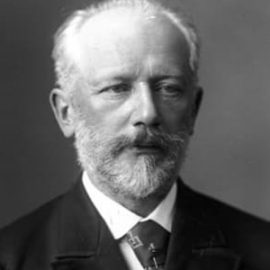
PYOTR ILYICH TCHAIKOVSKY (7th May 1840 – 6th November 1893)
Pyotr Ilyich Tchaikovsky who is among the most outstanding composers of Russian classic music during the romantic period related himself to Istanbul in various periods of his life. He took notes in his memoirs, which were collated in a book by music historian Emre Aracı. This work titled “Tchaikovsky in Istanbul” is a narration of the composer’s little-known visits to Galata, Pera and Hagia Sophia. Tchaikovsky visited Trabzon once in 1886, and Istanbul twice in 1886 and 1889. Details of these visits can be found in his biography and letters published right after his decease. In fact, both these visits were interludes in Tchaikovsky’s sea voyages between Russia and Europe when his ship made a call at the port of Istanbul. The composer was not in Istanbul for any special purpose, but made use of excursion opportunities during the voyage. May 16 –the day of his arrival in Istanbul– is described thus in his memoirs: “I awoke to a rather depressed morning. Cloudy skies. (…) All day after lunch I was on deck with binoculars hoping to see the Bosporus. But I had to wait till 2 before it appeared. Finally, we are in the Bosporus. We cast anchor. Palaces. My Georgian translator from Abkhazia became my Turkish friend, and pointed out everything on the right and left like a living Baedeker. The Sultan’s Palace, the Embassy etc. We finally arrived at the Port of Istanbul at around 3 o’clock.”
Room 14
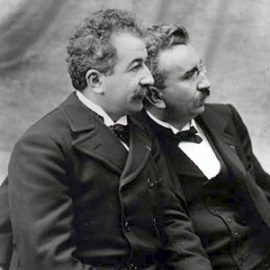
AUGUSTE & LOUIS LUMIERE
French brothers Louis and Auguste Lumiere –considered to be the inventors of the cinema– came to Istanbul in 1896 and shot a number of films titled “Panorama of the Golden Horn”, “Panorama of the Bosporus Coast”, “Turkish Artillery” and “Parade of the Turkish Infantry.” These movies were made only a year after 1895 when the two brothers had patented the cinematograph. Therefore, we can say that the scenery of Istanbul is among the first products of the cinema industry. The first apparatus called “Cinematographe Lumiere” functioned both as a recorder and a projector. The images were printed on film inside the cinematograph. More significantly, the speed needed to reflect the moving images on the screen was worked out by the two brothers. In the first movies of Lumiere brothers 15 frames per second were streamed through the lens. Silent films used 16 frames per second from 1920 to 1922, and 18 frames per second later on. This speed would be raised to 24 frames per second when sound movies appeared so that audio could be synchronised with the images. Lumiere brothers provided insight on history through the films they made, and their popularity kept rising. They would also unwittingly become the first film makers to suffer from censorship. The brothers were recording a public address by Russian Tsar Nicolas in May 1896, when suddenly the stand collapsed. The police immediately confiscated the recorded films and the movie was banned.
Room 15
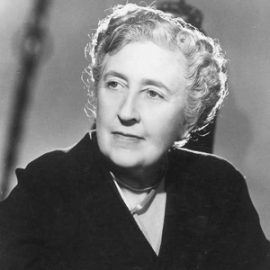
AGATHA CHRISTIE (15th September 1890 -12th January 1976)
Agatha Christie who is one of the great names in mystery fiction was a source of inspiration in the world of literature as well as in the movie industry. Her celebrated masterpiece “Murder on the Orient Express” was penned in Istanbul. She stayed in the gloomy Room 411 of Hotel Pera Palas to write her masterpiece that soon became a bestseller worldwide and was also made into movie. No wonder that Istanbul was chosen to create such a classic of the Orient, because the city simultaneously reflects the most mysterious traces of the East while turning its face to the West, becoming laden with features that would not be contradictory for either society. Agatha Christly allegedly disappeared for 11 days during her sojourn in Istanbul, and some people argue that what she lived through within that time still remains a mystery. In fact, that researchers reportedly asked for help from mediums in trying to solve this mystery. One of these was the famous medium Tamara Rand who evoked the spirit of Agatha Christie during the conjuration. The medium claimed that the conjured spirit of Agatha Christie had said that the key that will shed light on the 11 missing days was in Room 411 of Hotel Pera Palas in Istanbul.
Room 16
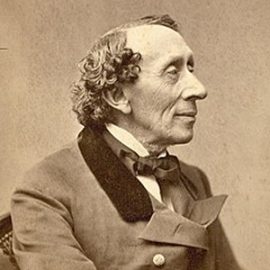
HANS CHRISTIAN ANDERSEN (2nd April 1805 — 4th August 1875)
If you have ever seen the “The Little Match Girl” anime you probably have an imprint in your memory never to be deleted through many years to come. Or remembrances of his tales that you have read. Hans Christian Andersen, a Scandinavian prodigy who touched the hearts of people all over the world was also a voyager who arrived in Istanbul, which he prefers to call “Konstantinopel”, in the Spring of 1841. We do not know how long he stayed, but we do know that he was clearly impressed by “Leanders Tower” and Scutari. His memories of Istanbul are collected in a travelogue titled “Bir Şairin Çarşısı”, which was published by Yapı Kredi Yayınları in 1993. “Golden crescents on domed mosques”, cypress trees, sycamores, the palace, houses and gardens on city walls are enough to turn Istanbul into a “dreamland” for him. Istanbul is fabulous and poetic in this respect, yet adorned with motifs that are strikingly Oriental for a Northman. He often mentions the chaotic character of the city, but never hesitates to describe the lyrical symbols that he has observed.
Room 17
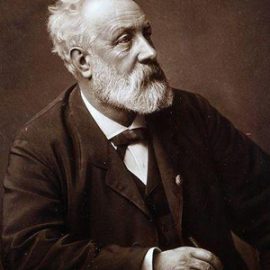
JULES VERNE (8th February 1828 – 24th March 1905)
French writer Jules Verne has transformed the imagination of Mankind. He demonstrated for all to see that one could go to the moon in an iron projectile at a time when no such thing had ever been imagined… that one could dive kilometres beneath the sea… and that one could fly around the world in a balloon…. There is no record of any journey by Jules Verne to Turkey. Nevertheless, impressions of Trabzon and Istanbul are narrated in one of his novels. People believe that the writer must have visited Turkey because of the detailed descriptions of Istanbul in his novel titled “Keraban the Inflexible” that takes place in the Ottoman Empire. However, there are so many myths and rumours about his life that this too is probably one of them. Verne describes two Ottoman cities –Istanbul and Trabzon– though the eyes of a Dutch merchant and his servant in this novel. Tophane Square, the Golden Horn, and Bayezid Square… followed by impressions of Trabzon…
Room 18
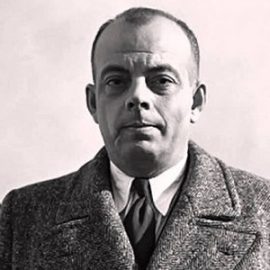
ANTOINE DE SAINT – EXUPERY (29th June 1900 – 31st July 1944)
French writer Antoine de Saint-Exupery –known to the world by his novel “the Adventures of the Little Prince” — was a military pilot. His involvement with Turkey is related to his profession as a pilot. Saint-Exupéry made a forced landing in Adana in 1935. There was a great fuss about “Bolsheviks, communists, reds are here to invade the country” because his aeroplane was coloured red. He was arrested and jailed by the gendarmerie. But the next day he was released by orders from higher up in Ankara –from Atatürk himself according to Falih Rıfkı– and went on his way. One of his greatest aspirations was to live in Istanbul. He wrote a letter to his sister in 1919, saying “When I become an engineer one day and have a lot of money, I will buy 3 automobiles. We will go together to Istanbul, where I shall be Sultan.” Some sources report that planet B-12 had been inspired by Göreme as he flew over Cappadocia, thinking, “This must be a different planet altogether.”
Room 19
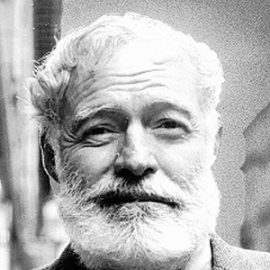
ERNEST HEMINGWAY (21st July 1899 – 2nd July 1961)
One of the first places that Ernest Hemingway visited as a war correspondent was Istanbul under occupation in 1922. His book “Occupied Istanbul and Letters from Between Two Wars” where all short and moving stories or articles he wrote for Daily Star at that time have been collected is a reflection of his sojourn in Istanbul. The book was published in Turkey in 1970. He describes Istanbul –where an estimated one and a half million people were living at the time– in his articles in depth which he wrote up to 30th September 1922 in a hotel room in Pera. Pera at that time would be very interesting in contrast with the present day. According to Hemingway, for example, Grande Rue de Péra was a narrow and very dusty street with narrow pavements covered with mud whenever it rained. The street was nevertheless quite crowded and traffic-laden from one end to the other. Hemingway also wrote in fine detail about what people ate and drunk or how they had amused themselves in the 1920’s. His sojourn in Turkey was not limited to Pera. He travelled further to Mudanya where he reported on armistice talks between Ismet Pasha and the occupying forces. He also wrote a brief article on Mustafa Kemal appended to this report. Later he would also go to Lausanne in Switzerland in 1922 to report on the Peace Conference, where he interviewed Ismet Pasha and made striking comments on him and the Conference as well.

